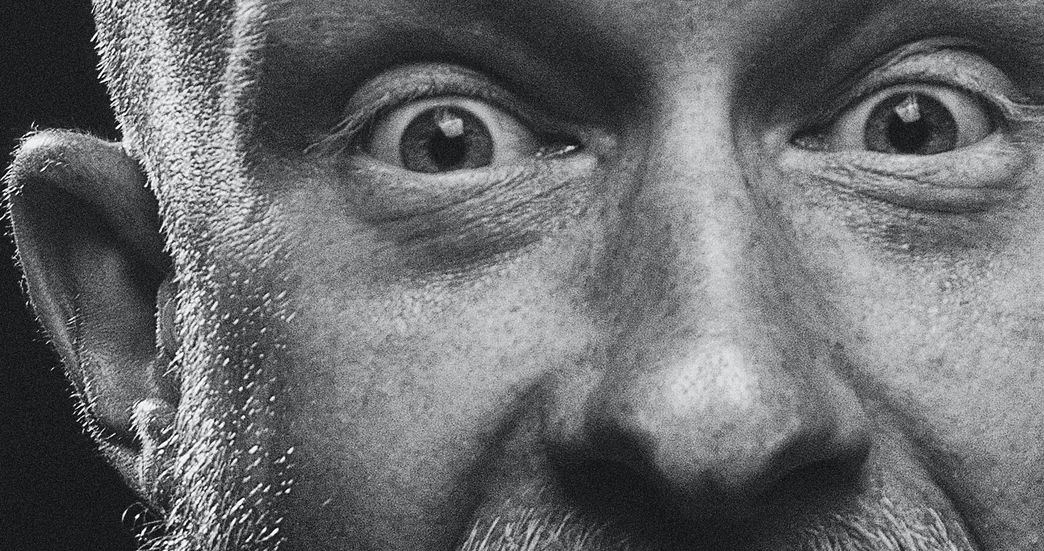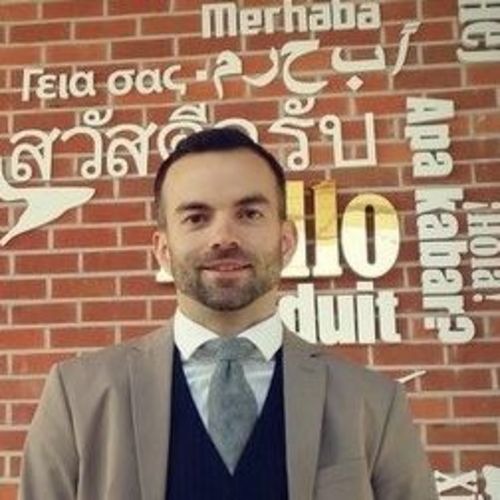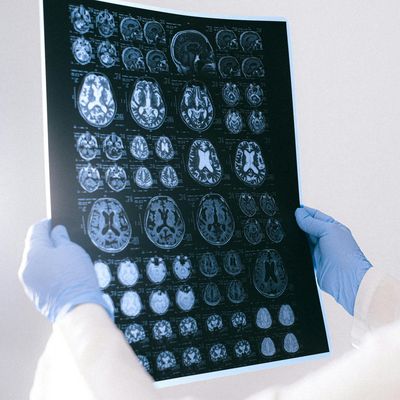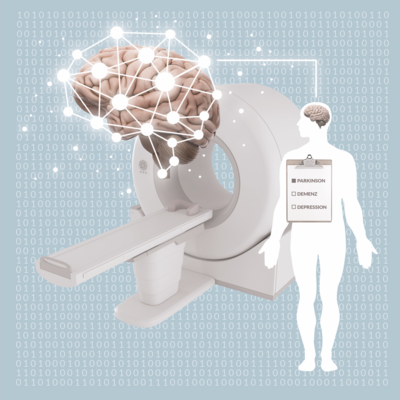What hurricanes and nasal breathing have in common

Mario Rüttgers uses Data Science methods to reveal the small hurricanes that occur in the nose when we inhale. He wants to help make future nose surgery more successful - and thus make it easier for patients to breathe.
On the wall of Mario Rüttgers’ study at RWTH Aachen University hangs a medical illustration of the human nose with the corresponding Latin names: cavum nasi, conchae nasales, septum nasi. It is rather unusual for an engineer to have to learn medical terms like these. Rüttgers is a doctoral candidate in the first cohort of postgraduate students at HDS-LEE, the Helmholtz School for Data Science in Life, Earth and Energy. However, his main research interest is not anatomy but rather fluid mechanics - in conjunction with artificial intelligence methods. Together, these two areas have led him to a doctoral research question where airflows play a key role - the nose.
Rüttgers first came into contact with the field of fluid mechanics while studying for his BA in engineering at RWTH Aachen. He was working on a simulation of casting processes, as computers can be used to calculate in advance how a mass will flow into a casting mold. The simulation sparked his interest: “Even then, I found it really fascinating that computers could be used to simulate how things behave in reality.”
Korean typhoons as giant study objects
And the link between fluid mechanics and artificial intelligence methods then came about thanks to “a slight detour,” as Rüttgers describes it. He ended up studying in Korea - a move that was motivated by love, as his then girlfriend and now wife is from South Korea. A scholarship from the South Korean government paved the way for the engineering graduate who exudes Far-Eastern calmness. He studied the language for three semesters so he could get to grips with his new day-to-day life in South Korea, and the MA he subsequently studied for at Pohang University of Science and Technology led him to data science methods.
The question that Rüttgers focused on during his time abroad is highly relevant to the coastal region near Pohang: How do typhoons move, and how can we predict how severe they will be? The coasts of the Korean Peninsula, bordering the East Sea, and and the neighboring countries of China, Taiwan, and Japan are severely affected by these Pacific hurricanes, which are becoming stronger and more destructive all the time due to global warming.
Rüttgers’ task at the Flow Physics and Engineering Laboratory (FPE) of the Pohang University was to write an algorithm that learns from satellite data and flow simulation data while incorporating parameters such as the sea surface temperature, air pressure, and wind speed. Predictions are currently still being made using simulations that require huge processing times and expensive hardware. The learning involved in artificial intelligence methods, on the other hand, only requires significant effort on a once-off basis. The simulations based on these methods can then be created in real time - at low cost and without supercomputers. The incredible speed at which predictions can be made using the new algorithm is especially advantageous when it comes to issuing warnings at the right time and saving lives in the process.
In February 2019, Rüttgers and his wife returned to Germany with their daughter, who was born in South Korea. And he brought his master’s degree and a wealth of insights into artificial intelligence methods with him. Back at home, this enabled him to get started in a new research field at the Institute of Aerodynamics at RWTH Aachen. Rüttgers now conducts bio-fluid mechanics research, which looks at flows in artificial organs and implants such as artificial heart valve prostheses and blood pumps, as well as flows in the human body in general, for example in the airways.
Flow simulations for a very small area
The flow simulations, which thanks to Rüttgers’ efforts do not focus on the expanses of the Korean East Sea but rather on a significantly smaller area, namely the human nose, aim to gain a better insight into symptoms commonly seen in ENT medicine. Many people experience breathing problems due to constrictions and curvatures in the nasal cavity. Surgical intervention is used in severe cases with the goal of providing relief for the affected patients. However, studies have shown that, in many cases, an operation does not result in any significant improvement and can even lead to other health issues. This is because doctors are still using CT scan images as their primary reference point for surgical alterations in the nasal cavity.
Helpful simulations for nose surgery: How much force does the patient have to use to breathe - before and after surgery? How much friction does the breathing air cause on the nasal mucosa?
Rüttgers is using his knowledge of artificial intelligence to contribute to the research goal of using a differentiated flow simulation to support doctors in making their diagnoses and, if surgery is being considered, to provide information that can help ensure its success. The ultimate aim is to make it easy for doctors to see how an operation could impact breathing using a computer.
The simulation calculates various physical parameters, such as the pressure at which air flows into the nose: How much energy does the patient need to exert in order to breathe, both before and after the operation? The researchers also consider the friction that inhaled air exerts on mucous membranes in the nose. This can increase if the patient finds it easier to inhale after an operation. However, this can also cause inflammation over time, an undesirable side effect of an apparently successful operation. Another key aspect of the breathing process is that air needs to be sufficiently warmed up so that it is not too cold when it reaches the lungs, creating favorable conditions for inflammation and infection. This means it has to make certain “detours”. To do so, it circulates in what are called the nasal conchae, where it is warmed up by the nasal membranes before flowing onward to the lungs. If these pathways are no longer in place after an operation, health problems can occur in the long term.
Planning surgeries better with artificial intelligence
Rüttgers’ job is to build an automatic “data pipeline” with the help of AI methods. In this pipeline, pathologies are automatically detected and localized on the basis of CT images, for example, or the surface of the airways is extracted and prepared for simulation. As with a large-scale typhoon simulation, the area inside the nose is then divided into billions of small elements, and various parameters such as pressure, friction, and temperature can be calculated for these elements. Various AI elements need to work together to obtain a result at the end of these complex computing operations. This requires a lot of processing power, which is why Rüttgers also works at the Jülich Supercomputing Centre (JSC), alongside his position at RWTH. The JSC gives him access to hardware he can use for his calculations. Thanks to Rüttgers’ data pipeline, setting up the simulations is not only more cost-effective but quicker as well - making them a viable option for everyday clinical applications. The other members on the research project then use Rüttgers’ AI methods as the basis for building the software for virtual surgeries and the corresponding visualization system, so doctors can use the new digital tool with ease.
Complications during surgery can thus be better predicted for each region of the nasal cavity, and surgical approaches can be checked in advance. And this is completely non-invasive.
“The added value of our method is that you can use it to simulate an operation on a computer first and then see what effects it might have,” Rüttgers explains. This makes it easier to assess any complications that might occur in each region of the nose, and an alternative surgical approach can be reviewed in advance in the same way. This provides surgeons with a precise recommendation as to the best course of action - “and it’s all completely non-invasive,” Rüttgers emphasizes. Applying a method like this would mean significant relief for patients and greater certainty for surgeons that they are choosing the right approach. Moreover, the health system could save costs by boosting the efficiency of treatment.
This combination of artificial intelligence and biomedical research makes Rüttgers and his project an excellent fit for the Life Science division at HDS-LEE. “As a postgrad associated with HDS-LEE, I benefit first and foremost from the training opportunities such as soft skills courses and of course the chance to network. Talking to other people who come across similar problems or challenges in their research is extremely valuable.” In addition to the biosciences and medicine, doctoral candidates at HDS-LEE focus on energy systems and materials as well as the geosciences. In other words, they work on a broad spectrum of applications for data science methods that aim to arrive at a better understanding of complex systems - ranging from vast to minuscule. And this is another reason why Rüttgers is in the right place at HDS-LEE - with his unique research background ranging from typhoons to nasal breathing.
Author: Constanze Fröhlich
Anyone who is interested in the project and would like to participate or support it, for example by providing CT images and collaborative writing of publications, can contact Mario Rüttgers: m.ruettgers@fz-juelich.de










